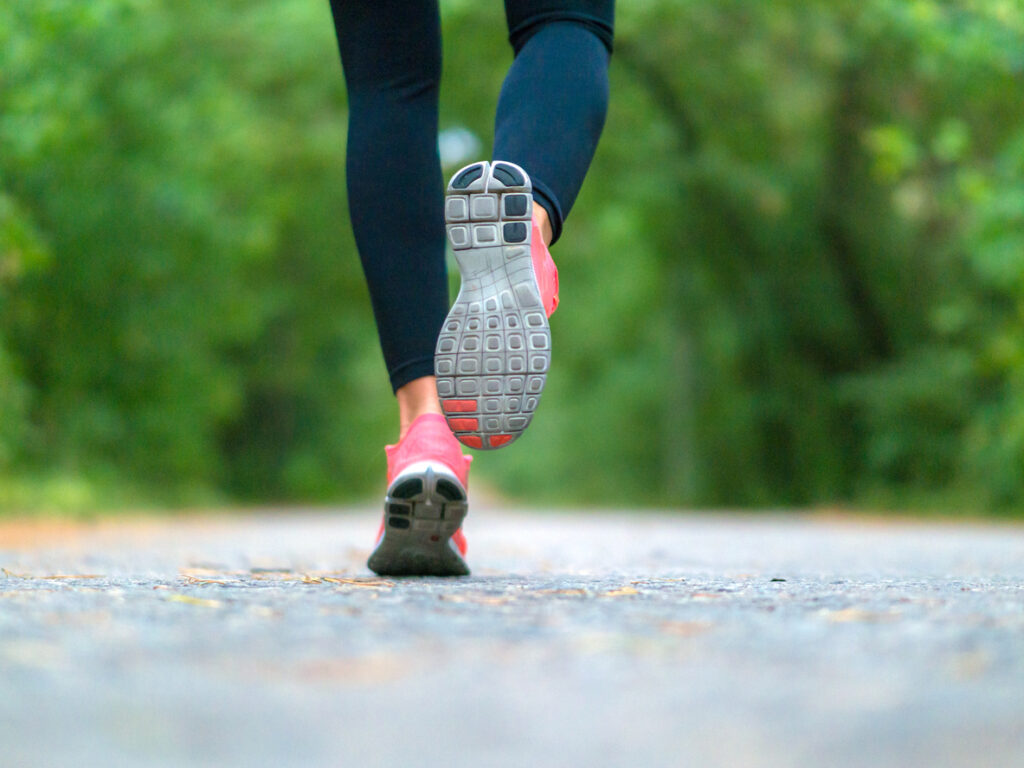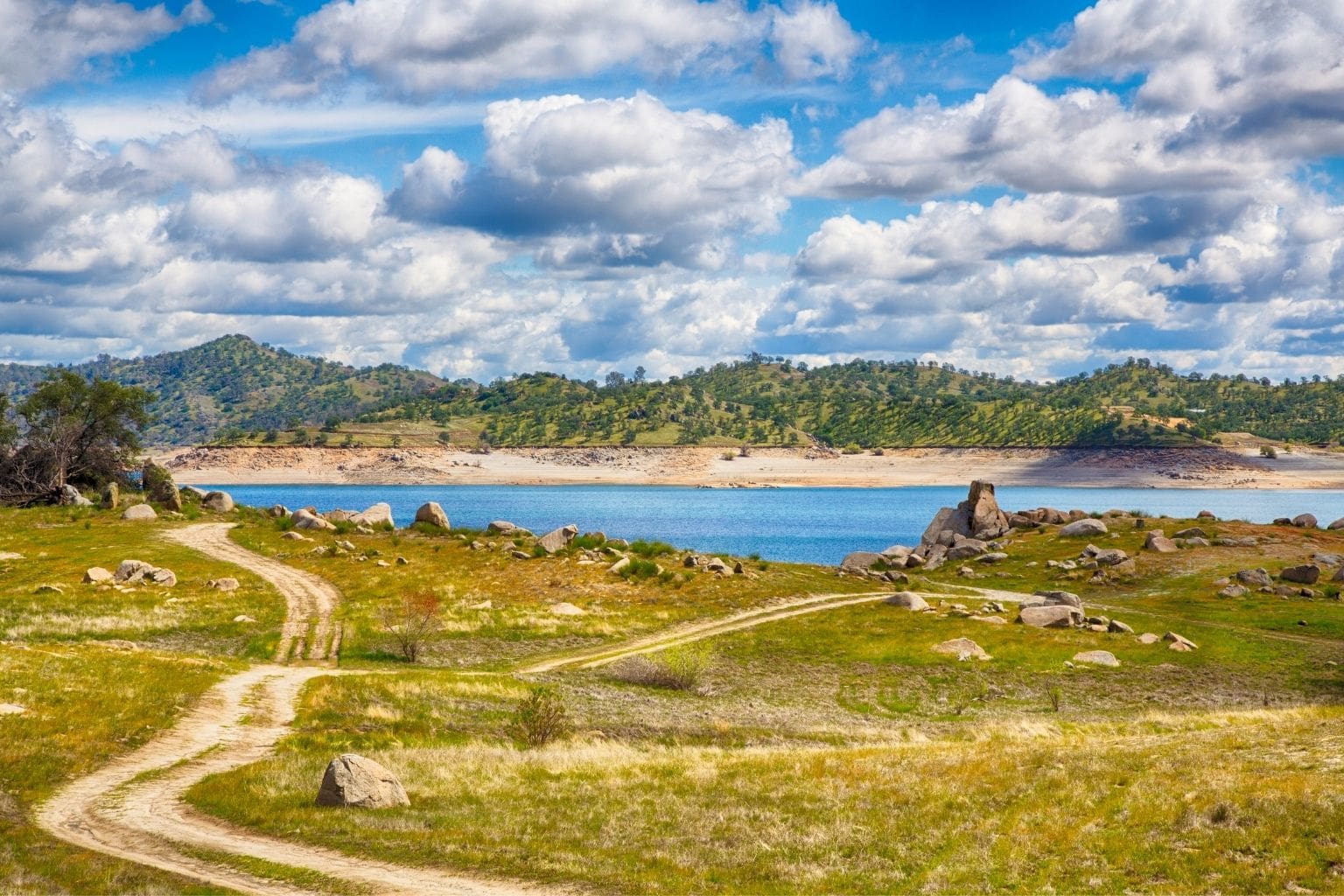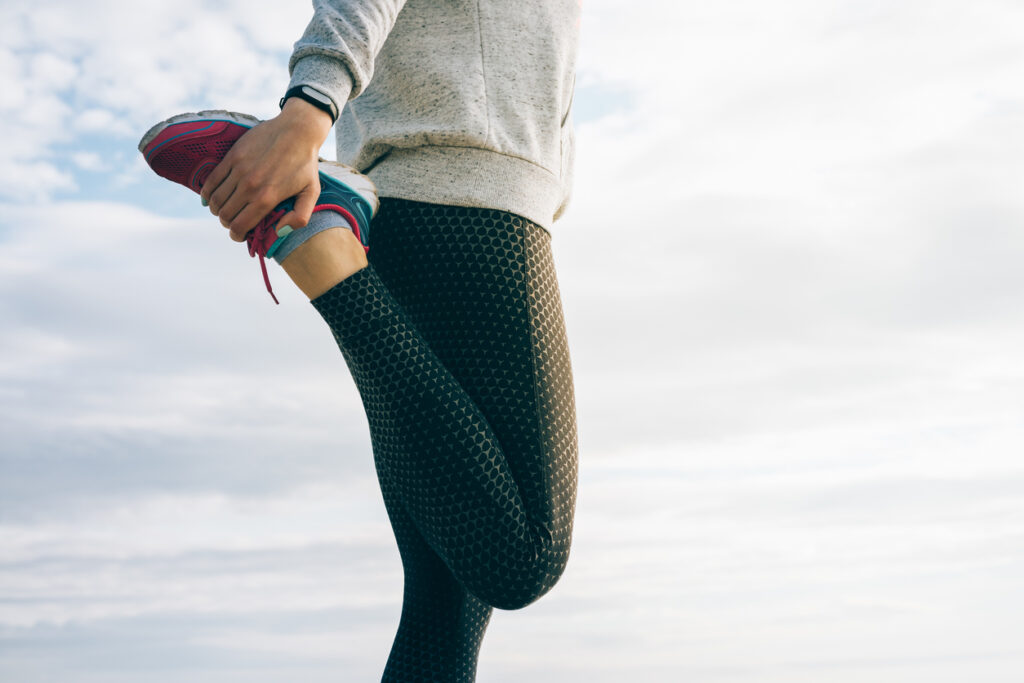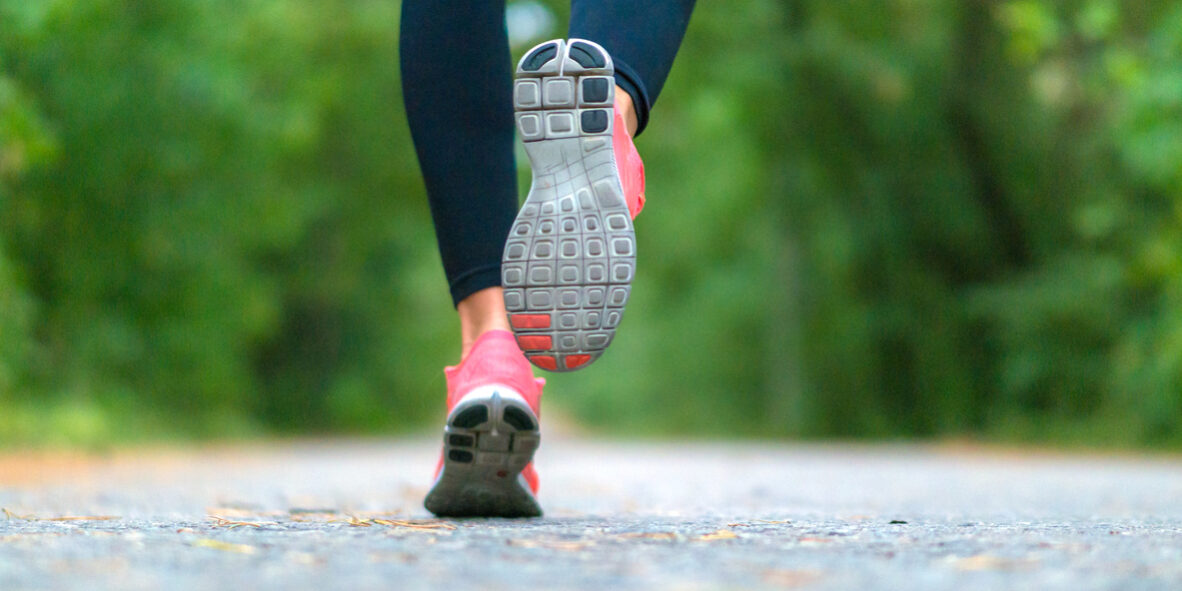Fresno County has some of the best weather in California along with great views and many open spaces—the perfect place to make getting in a good run or walk a regular routine. That’s why we’ve put together a list of the best trails for walking or running in Fresno County, in and around Fresno, Clovis, Sanger, and Reedley.
Walking and running are two of the most beneficial and feasible forms of exercise and leisure activities available to anyone. After checking out our list of trails, keep reading to learn more about:
- The benefits of walking and running
- What you need to know when walking or running
- When you should walk and when you should run
- Exercises to help you relieve pain and improve performance

Top Trails to Walk or Run in Fresno County
There are several trails and pedestrian paths in Fresno and Clovis to get in a good run or walk, and many neighborhoods in all Fresno County towns and cities have their own walking paths. To make it simpler, we researched these routes using Google search data and Strava heatmaps to give you the best trails to walk in Fresno County (in no particular order).
1. Woodward Park in Fresno
Woodward Park is easily the most well-known park in Fresno thanks to its sprawling trails through 300 acres of beautiful parkland.
You can walk or run through this regional park year-round. Take in the serenity of the Japanese Garden, bring your dog to the fenced dog park, or experience the views of the wildlife in the southeast corner of the park.

2. Dry Creek Trail in Clovis
Walk or run this 3.5-mile paved trail that takes you from the Clovis Botanical Gardens in Dry Creek Park to the Dry Creek Trailhead, a light recreational area that serves as a good break before heading back.
The trail is open to leashed pets and meanders along ponding basins, quiet neighborhoods, and art installations.
3. Reedley Rail-Trail in Reedley
This straight pathway along the railbank in Reedley is the main trail in Reedley that combines a good distance with a variety of views as you travel past many Reedley spots, from the civic area and courthouse, to the business district, and to the Kings River.
4. San Joaquin River Trail near Millerton Lake
Anyone who wants a challenging walk or run can count on the 3-mile segment of the San Joaquin River Trail, northeast of Millerton Lake.
This trail is away from the lights and sounds of any city center, making it the perfect exercise amid nature’s beauty as you climb up and down more than 600 feet in elevation.

5. Avocado Lake Rim Trail near Sanger
Unless you want to walk next to endless rows of farmland, there are only a few spots within 20 miles of Sanger where you can enjoy relief from the town life. The Avocado Lake Rim Trail is one of them, being a calm, hour-long walk around Avocado Lake, northeast of Sanger.
It’s known for its fishing spots and mountain cycling trails, but the walk and views around the lake often have trail-goers coming back.
6. Clovis Old Town Trail in Clovis
Compared to its counterpart route in Clovis, this trail is less traveled but takes you through the historic Old Town Clovis down Clovis Avenue.
At approximately seven miles, this relaxing trail takes you from the Sugar Pine Trailhead along the Fresno-Clovis Rail-Trail to the north of the Fresno Yosemite Airport. Along the way, you’ll cross several major streets, but also many historic neighborhoods and landmarks.
7. Lost Lake Park in Friant
Friant is a quiet community nestled in the hills along the San Joaquin River. However, it also boasts a hidden gem of a trail around Lost Lake Park.
The 1-mile nature trail at the lake and along the river may not be long, but it makes up for distance with incredible views on both sides of the trail. Check out this trail if you like to stop and admire the wildlife.
8. North Sanger Trail in Sanger
The North Sanger Trail starts in one town park and ends in another. Travel up and down the mile-long path set next to the Fowler Switch Canal that cuts through town.
9. Bridle Trail in Fresno County
One of the most popular walking and running paths in the southeast Fresno area is the 2.5-mile Bridle Trail, which boasts a variety of vegetation along the Fancher Creek Canal and educational posts along the way.
While the trail ends at South Clovis Avenue, you can join other joggers and walkers by continuing south to California, Sunnyside, Fowler, and Church.
10. Enterprise Canal Trail in Clovis
This 2-mile trail in northern Clovis has stunning views of new neighborhoods and wildlife while providing a calm walk or run along one of Fresno County’s largest ponding basins.
For an added challenge, head west from the northern end of the Enterprise Canal Trail, along Shepherd Avenue, to the Dry Creek Trail.
Safe, Efficient Running + Walking
There are many things to consider before going out on a walk or run on one of these trails, whether it’s how or when you should do the exercise.

What Are the Benefits of Walking + Running
“Movement is medicine,” meaning that doing something is better than doing nothing. If you can’t run, then walk.
Both running and walking are cardiovascular activities, which mean they work your blood circulation system, improving blood flow and lowering your resting heart rate.
The heart is only the start. Walking and running helps you build strong bones, strengthens your immune system, and burns calories. Walking and running are also sometimes called “mobile meditation,” which means it can also help your mental health by relieving stress.
Running vs. Walking: Which Exercise Should You Choose?
Running and walking each have their benefits and downsides:
Advantages of Walking Over Running
- Lower impact activity that still helps build strength and healthy bones
- Can walk any time of the day with less preparation or planning
- Athletes who walk regularly can often beat runners who don’t because they can maintain a pace better than deconditioned runners
Advantages of Running Over Walking
- Has more cardiovascular adaptations
- Builds more strength
- Get to cover more ground and see more sights on your run
Tips for Running or Walking in Fresno County
There are many things to consider before running or walking in Fresno County.
In Fresno County, fire season could make the air quality very unpleasant. During days that the San Joaquin Valley Air District measures bad air quality, consider walking or running on a treadmill indoors.
Heat is also an issue during the summer months. In the Central Valley, the hot, dry air can make physical activity uncomfortable.
Before you head out for a good walk or run on any of these trails, check out this series of tips to make sure you’re exercising in a healthy way with your best form.
Tips for Running
- Just start running and give yourself time to improve. Running can look like a variety of things: slow, interval, walking, fast, or super-fast.
- Focus on your time rather than a distance. Over time, your distance will increase in the same amount of time you have been training. Building “time on feet” helps improve your running.
- Use biometrics or manual methods to check your heart rate, which is an indicator of how hard you’re working. Use your heart rate to guide your efforts.
- Hydrate, eat, and watch your electrolytes for a smooth run.
- Make sure you’re enjoying the run. Running should be fun, and the goal should be to enjoy the run and run ‘your’ race.
- For experienced runners:
- Vary your training with different paces and distances.
- Find a coach if you want to improve. Contact your closest PRO~PT clinic for recommendations on running coaches.
- Get a running gait analysis—the results can help reduce risk for injury, improve running gait mechanics, and set a baseline to refer to if you do get injured. PRO~PT can help you with this through our PRO~Running program.
- Make sure to have enough “time off feet,” proper nutrition, and a good mental break to maximize recovery between runs.
- Invite people to run and help encourage new runners who may not feel confident.
Tips for Walking
- Don’t limit yourself to long walks. A simple, 10-minute walk is significantly better than no walk at all.
- Enjoy walking with the company of friends or family—doing healthy things together encourages every person involved.
- Walk where you feel most comfortable.
- Take a walking stick to use for balance, or to keep any curious wildlife you may encounter at bay.
- Do stretches after your walk to make the overall experience better.
What to Wear While Running or Walking
Usually, workout clothing is recommended for cardiovascular exercises like running and walking. However, you want to wear what makes you comfortable while running or walking. This could mean shorts and a no-sleeve shirt, or it could mean a windbreaker!
One key thing to make sure of when you’re walking or running is to wear bright clothing during the day, or reflective clothing or blinking lights during night. Several of the trails above cross high-traffic streets, so wearing observable clothing is important for your safety.
During hot weather, one of the most forgotten items to wear is sunscreen. Those walks or runs during high-noon with the sun in full force could cause burns and potentially other skin issues.
Exercises to Do Before Walking or Running
The following exercises can help you maximize your activity, prevent injury, and have fun while walking or running.
Walking Exercises
Walking Exercise 1: “Sit-to-Stand”
“Sit-to-Stand” Steps:
-
- Make sure your chair is secure and isn’t going to move away from you as you perform the exercise.
- Start seated, then lean forward so your nose is over your toes.
- Push on the ground and stand up tall.
- Lower back down in reverse order, with your hips back, “nose over toes,” and avoiding “dropping” into your seat.
- Use your hands if necessary.
- Start out with two to three sets of 10 repetitions and build up to 50 repetitions per day.
Walking Exercise 2: “Single-Leg Balance”
Walking is an activity in which you alternate your balance briefly on each leg. If you can’t balance on each leg without fatigue or loss of balance, you have a higher risk for falls. This exercise can help you improve your balance.
Equipment needed: A chair or countertop
“Single-Leg Balance” Steps:
-
- While holding onto your chair or a countertop, lift one leg and balance on the other.
- Keeping your hips level as you focus on standing tall, start the hold with your knee flexed behind you.
- As you get better, lift your knee in front of you.
- Let go of the chair or countertop, if you can, and balance independently.
- You can sway minimally, but if you feel like you’re losing balance, place your foot down.
- Build up the hold on each leg from 5-10 seconds per repetition, to 10-15 seconds, to 20 seconds, to 30 seconds, and up to 1 minute.
Walking Exercise 3: “Calf-Stretch Exercise”
Your calf muscles are part of your lower leg. Tightness can happen there, limiting the range of motion for your ankles while standing or walking. This range of motion is important to maintain because it’s needed for balance to decrease the risk of falls.
Equipment needed: A curb, stepping platform, or phone book
“Calf-Stretch Exercise” Steps:
-
- Place your toes and the ball of your foot on the step, allowing your heel to come down.
- You’ll feel this stretch behind your lower leg.
- Keep your knee straight, then maintain the stretch with your knee bent. This ensures that the two targeted muscles in your lower leg will be stretched.
- If you don’t have equipment to step on, do this stretch by standing with your legs split forward and backward. Push against the wall and you’ll feel the same stretch in the back leg.
- Make the stretch worth it by holding each repetition for 10 low breaths. If the stretch is too tight, slightly back off and go to where you begin to feel the stretch. This will improve over time.
Running Exercises
Running Exercise 1: “Squat”
Leg and hip strength are vital to your health and functional mobility. This exercise is a higher-level functional movement that directly contributes to a decrease in the chance of injury while running.
Equipment needed: None
“Squat” Steps:
-
- Start in an upright standing position.
- Sit your hips back with your back straight and aligned.
- Bend your knees and lower your body to where you feel comfortable. You should feel your quads and glutes being worked.
- Push on the ground and squeeze your quads and glutes until you return to a standing position.
- Start out with three to five sets of 10-15 repetitions per set, and build up to 100 repetitions per day.
Running Exercise 2: “Reverse Lunge”
Lunging is a functional movement that carries over to running with its split-stance position. The exercise promotes hip flexion and hip extension along with integrating your core muscles.
Equipment needed: None
“Reverse Lunge” Steps:
-
- Start by placing one leg back, making sure you have a good but safe distance between feet to avoid under-striding. Don’t be afraid of losing your balance!
- Lower your body without leaning your trunk forward.
- Pause at the bottom. It is okay to touch your knee to the floor at first.
- Lean forward, putting weight on your front leg.
- Push up to stand, driving your back leg up in front.
- Pause at the top, then lower your leg down or reach back to repeat.
- Alternate legs after a set or after every rep.
- Start out with three to five sets of five to 10 reps for each leg, and build up to 50 reps per leg per day.
Running Exercise 3: “Hip Flexor Quad Stretch/Hip Extension Mobilization”
Running demands a lot from the anterior chain muscles, which include your hip flexor and quads. These muscles can become tight due to sitting-related tasks throughout the day. You need to give these tissues the proper length of stretch to prevent injuries due to tightness.The hip extension mobilization is also important because you are using your full hip joint. A very common distinction between a healthy runner and injured runner is the lack of hip extension mobility.
Equipment needed: A chair and a towel
“Hip Flexor Quad Stretch & Hip Extension Mobilization” Steps:
-
- Place the chair against the wall.
- Lunge in front and put the top of your back foot on the chair seat, placing the same knee on the towel for comfort.
- With your front leg moving forward to help maintain balance, your back leg should be feeling the stretch in the front of your hip and your quad. Try to get your back knee behind your hip.
- Keep your trunk upright throughout the duration of the stretch. This is a big stretch, but it has high value to extending your leg muscles.
- Hold the stretch and give in to it for 10 breaths to complete a rep.







